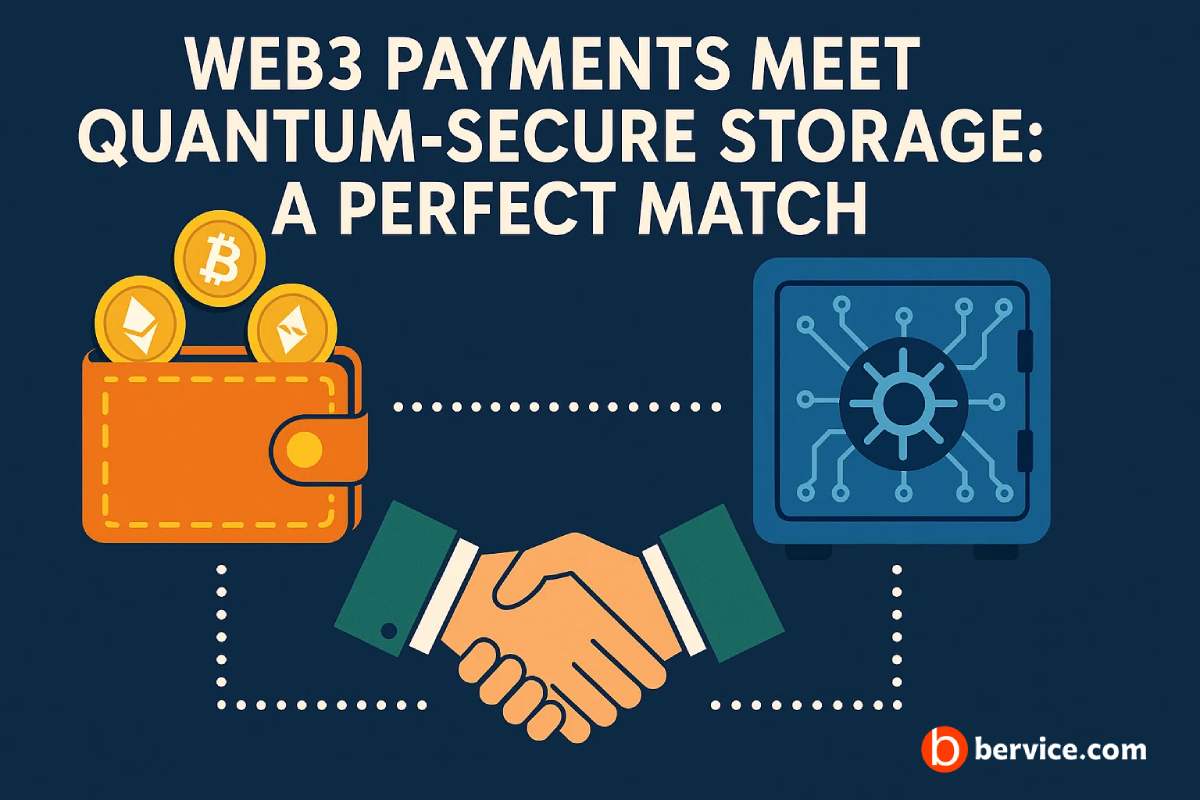Introduction: The Convergence of Two Revolutionary Technologies
The rise of Web3 has redefined how we think about money, ownership, and trust in the digital age. Decentralized payments have opened the door to borderless, permissionless, and instant transactions powered by blockchain. At the same time, advancements in quantum computing are pushing the limits of traditional cryptography, creating both opportunities and threats to digital security.
This convergence sets the stage for Quantum-Secure Storage—a technology designed to protect sensitive data against future quantum attacks. When combined with Web3 payment systems, it creates a secure, decentralized, and future-proof financial ecosystem.
The Role of Web3 in Decentralized Finance
Web3 payments leverage blockchain’s decentralized nature to eliminate intermediaries, reduce transaction costs, and provide real-time settlements. Key features include:
- Permissionless Access: Anyone with a wallet can transact without relying on traditional banks.
- Programmable Money: Smart contracts enable automatic execution of transactions based on predefined conditions.
- Interoperability: Cross-chain payment solutions allow seamless transfers across multiple blockchains.
However, as the ecosystem grows, so does the need for robust data security—especially as quantum computing threatens existing cryptographic standards.
Quantum Computing: A Double-Edged Sword
Quantum computers promise exponential improvements in computation speed, enabling breakthroughs in science, AI, and finance. But they also pose a significant risk:
- Breaking Classical Cryptography: Many widely used encryption schemes, like RSA and ECC, could be cracked by quantum algorithms such as Shor’s Algorithm.
- Threat to Blockchain Security: Wallet keys, transaction data, and private identities could become vulnerable in a post-quantum era.
This is where Post-Quantum Cryptography (PQC) and Quantum-Secure Storage come into play.
Quantum-Secure Storage Explained
Quantum-Secure Storage integrates post-quantum cryptographic algorithms into decentralized storage systems, ensuring that even if quantum computers become powerful enough to break classical encryption, sensitive data remains protected.
Key components include:
- Lattice-Based Cryptography: Resistant to known quantum attacks.
- Hybrid Encryption Models: Combining classical and quantum-safe algorithms for gradual transition.
- Decentralized Storage Networks: Data is encrypted, fragmented, and distributed across nodes, ensuring no single point of failure.
The Perfect Match: Web3 Payments + Quantum-Secure Storage
When combined, Web3 payments and quantum-secure storage form a holistic ecosystem that addresses both financial efficiency and long-term security:
- Secure Digital Wallets
Private keys stored in quantum-secure vaults remain safe even in a post-quantum world. - Tamper-Proof Transactions
Smart contracts can integrate PQC signatures, ensuring immutable and quantum-resistant transaction histories. - Data Sovereignty for Users
Users retain full control over their financial data, stored in decentralized, quantum-secure environments. - Regulatory Readiness
As governments begin drafting post-quantum security guidelines, this hybrid model stays ahead of compliance requirements.
Real-World Applications and Use Cases
- Decentralized Finance (DeFi): Quantum-safe protocols protecting DeFi platforms from future attacks.
- NFT Marketplaces: Securing ownership records of high-value digital assets.
- Cross-Border Payments: Instant, secure, and censorship-resistant remittances.
- Enterprise Finance: Protecting sensitive corporate payment data from emerging threats.
Challenges Ahead
While the vision is promising, several challenges remain:
- Performance Overhead: Post-quantum algorithms can be computationally heavier.
- Standardization: Ongoing efforts like NIST’s PQC competition are crucial for global adoption.
- User Experience: Balancing top-tier security with ease of use remains a design priority.
Future Outlook
The fusion of Web3 payments and quantum-secure storage will likely drive the next era of decentralized finance. With continuous advancements in PQC, blockchain interoperability, and hardware acceleration, a quantum-resistant Web3 ecosystem seems not just possible but inevitable.
By proactively embracing quantum-safe architectures, Web3 innovators can ensure that the decentralized financial systems of today remain secure in the quantum-powered future of tomorrow.
Conclusion
As the world approaches the quantum computing age, data security and financial integrity must evolve beyond traditional methods. The marriage of Web3 payments with quantum-secure storage offers a powerful blueprint for creating a decentralized, trustless, and future-proof financial ecosystem—one where innovation meets security at the highest level.
Connect with us : https://linktr.ee/bervice
